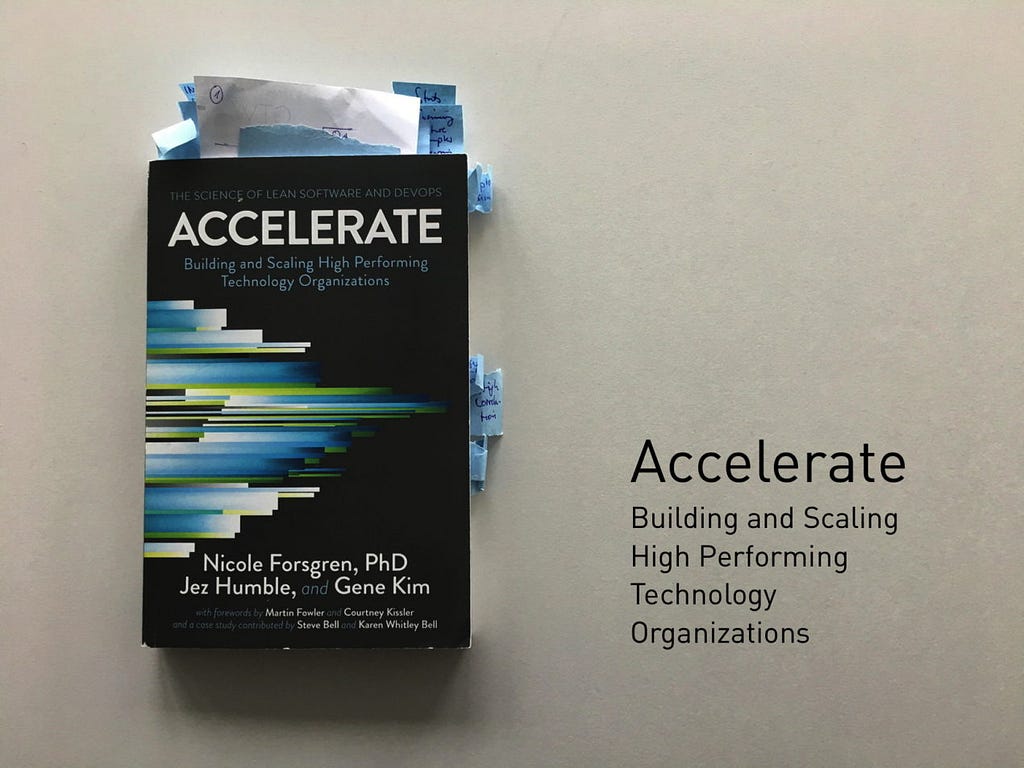Latest news about Bitcoin and all cryptocurrencies. Your daily crypto news habit.
TL;DR: Accelerate
Nicole Forsgren, Jez Humble, and Gene Kim latest book Accelerate: Building and Scaling High Performing Technology Organizations describes the factors that drive high-performing tech organizations, derived from the data that has been aggregated with the State of DevOps Report since 2014.
“Accelerate” is a must-read book for anyone involved in building agile organizations and teams. It lays out a path to success based on a statistical analysis of data. It also puts an end to the popular narrative that ’becoming agile’ is somehow a fuzzy process. The data shows that there are patterns at all levels that successful agile organizations share.
In other words: becoming agile can be data-driven. (A hypothesis that I shared in How to Measure Agility of Organizations and Teams — The Results of the Agile Maturity Survey earlier.)
Accelerate: How To Drive Improvement
Since 2014, Nicole Forsgren, Jez Humble, and Gene Kim have been publishing the “State of DevOps Report.” The report is a well-respected survey to help to understand how DevOps as a set of practices and cultural value supports companies improving software engineering and release practices, software quality, information security, and generally receiving feedback on product development. Thus, the “State of DevOps Report” supports the visualization of the contribution of DevOps to the organization’s overall business performance, measured, for example, by market-share, valuation, and profitability.
Based on the statistical analysis of the available 23,000 data-sets, the authors identified 24 key capabilities that improve software delivery capabilities, falling into five categories:
Continuous delivery
There are eight success factors in continuous delivery:
- Use version control for all production artifacts
- Automate your deployment processes
- Implement continuous integration (CI)
- Use trunk-based development processes
- Implement test-automation
- Support test data management
- Shift left on security (integrating security into the design and test phase of the software development process)
- Implement continuous delivery (CD).
Architecture
There are two success factors in (application) architecture:
- Use a loosely coupled architecture
- Architect [the application] for empowered teams.
If you enjoyed the article, do me a favor and smack the 👏👏 👏 multiple times — your support means the world to me!
If you prefer a notification by email, please sign-up for my weekly newsletter and join 18,591 peers.
Product and process
There are four success factors in product and process:
- Gather and implement customer feedback
- Make the work visible through value streams
- Work in small batches
- Forster and enable team experimentation.
Lean management and monitoring
There are five success factors in lean management and monitoring:
- Have a lightweight change approval process
- Monitor across application and infrastructure to inform business decisions
- Check system health proactively
- Improve processes and manage work with work-in-progress (WIP) limits
- Visualize work to monitor quality and communicate throughout the team
Cultural
There are five success factors in cultural issues:
- Support a generative culture (as outlined by Westrum)
- Encourage and support learning
- Support and facilitate collaboration among teams
- Provide resources and tools that make work meaningful
- Support or embody transformational leadership.
Source: “Accelerate,” appendix A, pages 201–207.
Accelerate — Conclusion
“If we have data, let’s look at data. If all we have are opinions, let’s go with mine.” (Jim Barksdale.)
Becoming agile as a product team is an enormous undertaking in any case — not to mention the particularities of each organization involved in the process. Given the resulting complexity, suitable approaches to agile transitions have often been kept either fuzzy or deliberately superficial — every team has to figure out the way itself.
Now — with “Accelerate” — we have for the first time a robust analysis based on scientific principles available providing the data needed to reduce the level of fuzziness of agile transitions. Now we have at least a first guess at hands what practices might also work in our organization and where to head next.
In that sense, “Accelerate” is an excellent value for the money and a must-read in my eyes for anyone involved in creating software today.
📺 Join 600-plus Agile Peers on Youtube
Now available on the Age of Product Youtube channel:
- 🆕 Hands-on Agile Webinar #4 on agile failure patterns 2.0.
- Hands-on Agile Webinar #6 on product owner anti-patterns.
- Hands-on Agile Webinar #5 on sprint planning anti-patterns.
✋ Do Not Miss Out: Join the 3,700-plus Strong ‘Hands-on Agile’ Slack Team
I invite you to join the “Hands-on Agile” Slack team and enjoy the benefits of a fast-growing, vibrant community of agile practitioners from around the world.
If you like to join now all you have to do now is provide your credentials via this Google form, and I will sign you up. By the way, it’s free.
🎓 Do you want to read more like this?
Well, then:
- 📰 Join 18,591 peers and sign-up for my weekly newsletter
- 🐦 Follow me on Twitter and subscribe to my blog Age of Product
- 💬 Alternatively, join 3,700-plus peers of the Slack team “Hands-on Agile” for free.
Accelerate: Building and Scaling High-Performing Technology Organizations [Review] was first published on Age-of-Product.com.
Accelerate [Review] was originally published in Hacker Noon on Medium, where people are continuing the conversation by highlighting and responding to this story.
Disclaimer
The views and opinions expressed in this article are solely those of the authors and do not reflect the views of Bitcoin Insider. Every investment and trading move involves risk - this is especially true for cryptocurrencies given their volatility. We strongly advise our readers to conduct their own research when making a decision.


